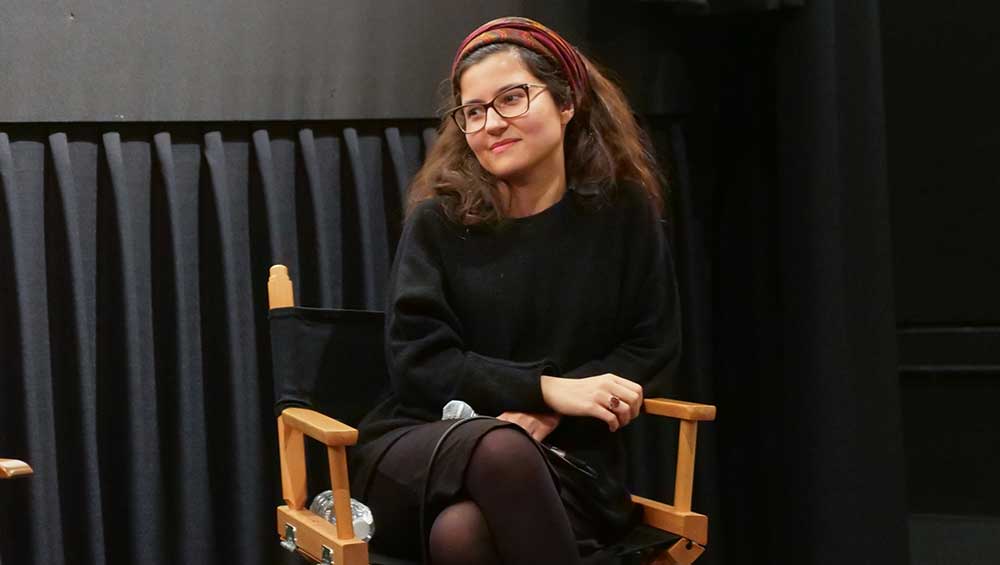
Maryam Tafakory. Courtesy of The Flaherty, photo: Abby Lord.
by NICOLA HOMER
Maryam Tafakory (b1987) grew up in post-revolutionary Iran. Now, she is an artist and film-maker, who has exhibited to acclaim on the international stage. Tafakory’s first UK solo exhibition, held by Lux London, was one of Artforum’s critics’ picks of 2023. The artist has held solo events at the Museum of Modern Art (MoMA) in New York, the National Gallery of Art in Washington DC and the Academy Museum in Los Angeles. She won the 2024 Film London Jarman Award, a £10,000 prize for artists using moving images. Tafakory was described as “an outstanding artist working at the intersection of cinema and live performance” by Adrian Wootton, chief executive of the British Film Commission and Film London. “I am immensely proud of our role in discovering and developing some of the UK’s most exciting film-makers,” he said.
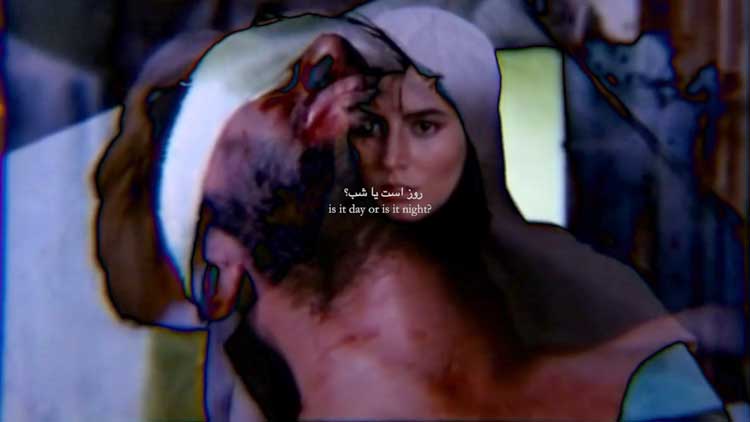
Maryam Tafakory, Nazarbazi, 2021. Film still. Courtesy the artist.
Tafakory holds a master’s in fine art from the University of Oxford’s Ruskin School of Art and a PhD in fine art from Kingston University London. The artist’s innovative process involves collaging found footage with the cinema of post-revolutionary Iran to explore censorship and prohibition. This can be seen in the abstract narrative film about desire, Nazarbazi (2021), which uses poetry and silence to investigate discreet forms of communication. During a residency at the Villa Sträuli in Winterthur near Zurich, she recently focused on her new film, Sukhte-del, part of the “del” series. The first chapter, Mast-del (2023), explores a forbidden relationship, and transforms fictional films in the presentation of a fragment of the politics of everyday life in contemporary Iran. The second chapter, Razeh-del (2024), tells the story of the short-lived Iranian newspaper Zan (Woman). Premiered at the Cannes film festival’s Directors’ Fortnight, Mast-del featured among Film Comment’s best short films of 2023 and the Sight & Sound poll for the best video essays of 2023, and Razeh-del won two awards at the Locarno film festival in 2024. The artist has established an international reputation, with screenings at the London film festival, the New York film festival, the international film festival Rotterdam and the Toronto film festival, as well as Tate Modern.
After winning the 2024 Film London Jarman Award, Tafakory spoke to Studio International via email about her life and work.
Nicola Homer: How and when did you get started as an artist?
Maryam Tafakory: I started the day I was prevented from enrolling in art school. I think it was during the second year of high school when students could opt to switch to the art track. Once I told my parents about my decision, there was a firm “No”. Behind my back, they asked my friends to talk me out of it. I didn’t listen and went and bought all the art books I needed for the exam. Of course, it didn’t work out; switching to art school needed parents’ permission. I was pushed to study mathematics and physics and later computer science for my undergraduate degree. By then, I lacked the confidence to make a dramatic switch, but all along I spent most of my time with films, drawings and the art pages of newspapers and magazines.
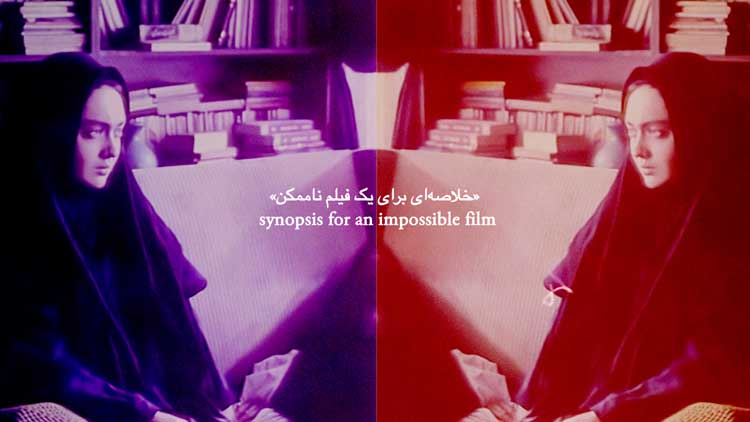
Maryam Tafakory, Razeh-del, 2024. Film still. Courtesy the artist.
It was through a friend that I discovered “‘secret” life drawing classes. I was 14 or 15. My first class was held in a large basement in Gisha neighbourhood. It was a very small class that kept changing locations to avoid police raids or nosy neighbours. This was at a time when simply being in a room with girls and boys drawing a model wearing skintight clothes could lead to arrest. We never had a nude model in the class, but as friends, we would take turns modelling for each other at home when our parents were away.
I was in love with those classes. There was an intimacy that for once wasn’t surveilled. There was an equal measure of joy and fear. We weren’t just learning to draw; we were tasting pleasures we weren’t allowed to.
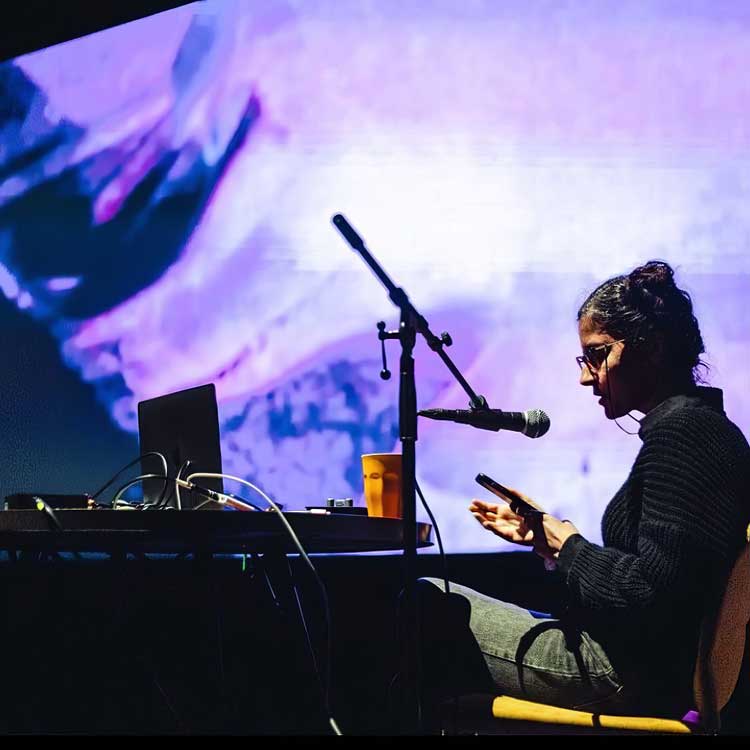
Maryam Tafakory. Code Names, performance, Courtisane Festival 2023, Belgium. Courtesy the artist.
NH: What or who has inspired your creative work?
MT: Many people inspired me over the years. My high school history teacher always sat among us students and turned every class into a discussion about current affairs, our dreams and worries, or anything other than our textbook of false histories. She’d give us half our exam questions in advance so we could all pass without studying. She was careful not to give us all the answers so we’d each get different marks to avoid suspicion from the headmaster. Sadly, one day, a snitch turned her in, and she was fired. I never saw her again, but I never stopped learning from her.
NH: How does it feel to have won the 2024 Film London Jarman Award?
MT: I feel honoured and grateful for this recognition. I have been making films with little to no funding; this award kindled some hope.
NH: Matthew Barrington, a cinema curator for the Barbican and a spokesperson for the jury of the Jarman award, called your work: “A compelling exploration of displacement, memory and resistance, interweaving archival fragments, poetry and personal narratives to craft deeply evocative works.” How do you explore displacement, memory and resistance in your films?
MT: Working with this archive is a way of looking at how it has shaped us (“us” as in those of us who grew up with these films), how it has seeped into our collective unconscious, leaving imprints we carry without our knowing. To work with any archive is to sit with memory and history and the gaps that define both. There is a confrontation not only with what has been preserved and prioritised, but also with what has been left out, censored, or distorted. My reworking of this material isn’t so much about looking at what’s there, but noticing what isn’t: the missing bodies, the repressed stories, the traces of what has been purposefully erased that marks every frame. I try to rewrite these images to imagine a new archive and make space for the forbidden stories they could never hold.
Nazarbazi by Maryam Tafakory [excerpt]
NH: In your essay film Nazarbazi (2021), there are fragments from films and books, for example a literary fragment from the great French writer Jacques Derrida. How significant are the themes of authorship and storytelling to your work?
MT: Each of my projects began with writing. Often, it’s a text I’ve written before, and I revisit it to see if I still feel the same connection I did when writing it and whether it’s still worth reading. Both Mast-del and Razeh-del were texts I had written as part of my PhD in 2017, which I later returned to and re-edited.
Of course, my works are influenced by my reading, whether I want them to be or not. The sentences that grab me find their way into my films even if they can’t be seen or noticed. It’s what those lines do to my thinking that guides the montage. There’s only a brief line by Jaques Derrida in this film, unlike Ahmad Shamlu and Forugh Farrokhzad, who are heavily referenced, along with Adonis and an unknown Iranian poet. Yet, Derrida is the author I’m asked about most. I got into Derrida through Hélène Cixous, and both touched me in unexpected ways. There are many writers who have schooled me. Shamlu, Forugh and Sadegh Hedayat are among them. I spent much of my teenage years lost in their words.
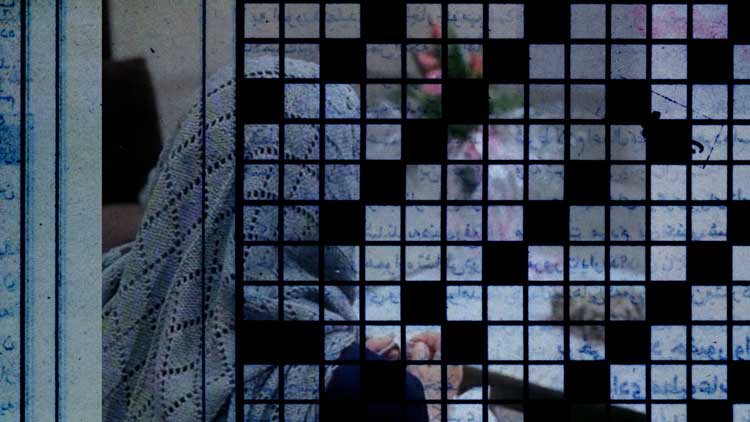
Maryam Tafakory, Razeh-del, 2024. Film still. Courtesy the artist.
NH: I read that your recent work, Razeh-del (2024) tells the story of the first Iranian women’s newspaper, published from 1998 to 1999. Could you tell me about this work? What makes a story speak to you?
MT: There’s a sense of inevitability to how personal histories slip into the broader social and cinematic narratives that I explore. It’s not always intentional, but perhaps that’s the nature of the work. Some things insist on being carried forward, whether I invite them or not.
When I was 17, an older friend in my life drawing class introduced me to a few publications, and I began translating art and film reviews for them. But the main story for Razeh-del is from when I was 12 or 13, and with my classmate, Roya, we saw an open call for schoolgirls to submit a story.
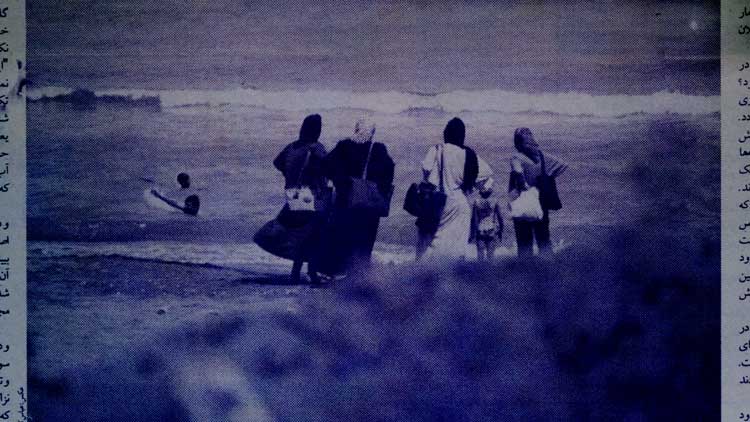
Maryam Tafakory, Razeh-del, 2024. Film still. Courtesy the artist.
I never know which ideas come first: the personal or the broader themes I’m interested in. My process involves a fair amount of research, collecting, cataloguing and writing in many directions. Over time, I’ve noticed patterns, connections and themes that persisted across my work, even if they weren't immediately obvious to me. In many ways, I’m still working through the same ideas I began working on during the first years of my PhD, ideas that have since turned into a series of films, videos and performances.
NH: I understand that your work Mast-del (2023) displays an intention to transform fictional films into a non-fiction fragment about political reality in contemporary Iran. Could you talk a little bit about how you investigate the politics of memory in your film-making?
MT: I often say this is an archive of betrayals. As a queer person, you don’t have to watch these films to see whether you might find yourself in them; you know you won’t. There are stories that cinema never dared to imagine, even in fiction. I write those stories directly on to the images that denied them.
Mast-del by Maryam Tafakory [excerpt]
Working with this archive in itself is a way of looking at the tension between the seen and the unseen, between remembering and forgetting, between what is kept and what is discarded, what is shown or distorted, and which stories we are allowed (or not allowed) to tell, whose voices are raised or silenced, and so on.
NH: Who do you admire most among other film-makers?
MT: I admire those who do not fear voicing their thoughts and politics when it may cost them friends, funding, or a career. In Iran, people risk their lives – not just jobs – to speak the truth. The silence of some in the art world during a live-streamed genocide in Gaza has been deeply disturbing.
NH: What direction do you feel that your work will progress in?
MT: Who knows. I’m not particularly interested in the art world’s expectation that we constantly produce new works completely different from the ones that came before, which feels rooted in a capitalist drive that doesn’t speak to me. I think I’ll keep working without the pressure to produce a “new product”.